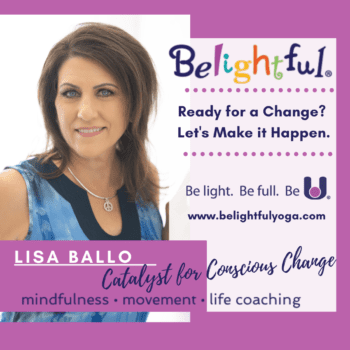When we say yoga for SAD, we don’t mean to confuse you. We’re not talking about doing yoga that will make you depressed and morose.
We’re actually talking about Seasonal Affective Disorder (SAD).
And while you may feel down and more inclined to hibernate in the winter months, SAD isn’t your standard winter blues. Far from it.
What Exactly Is SAD?

SAD is a type of serious depression. It typically occurs during certain seasons – hence the “seasonal” part of the name. More often than not, those who struggle with SAD are impacted during the fall and winter months.
Those impacted by fall and winter SAD may struggle with any (or all) of the following:
- Daily sadness and depression
- Extreme fatigue or lack of energy
- Anxiety
- Irritation/agitation
- Feeling hopeless and/or worthless
- Difficulty concentrating
- Withdrawal and loss of interest in pleasurable activities
- Sleeping issues (typically oversleeping)
- Heaviness in the arms and legs
- Excessive cravings for comfort food and subsequent weight gain
- Suicidal thoughts
There is, however, a rare form of SAD that starts in the late spring and ends in late fall. Those who struggle with summer SAD are often anxious, irritated, restless, and experience a decreased appetite and weight loss during the summer months. In some cases, they can become violent.
Are There Specific Causes?
Though the science is largely lacking, researchers speculate that the lack of sunlight during the winter months may trigger SAD. With less sunlight, the body produces more of the chemical (melatonin) that dictates our sleep patterns and mood. Excess melatonin results in lethargy and sleepiness.

Decreased sunlight will also impact serotonin levels in the body. That’s because those levels get boosted with vitamin D. And the best source of vitamin D is the sun.
As the days grow shorter, there’s also a shift in the biological clock. This internal clock regulates mood, sleep, and hormones based, to some extent, on the rising and setting of the sun. As the amount of daylight lessens, it has difficulty adjusting to those changes.
Who Struggles With SAD the Most?
It’s unusual to see SAD in anyone under the age of 20 and the risk for it increases with age. Women are affected more than men.
People who live far north of the equator or in areas that are very cloudy in the winter are also more likely to struggle with SAD.
Folks who have a chemical imbalance in their brain are at a higher risk for SAD, as well. For them, the imbalance can render their serotonin levels lower than normal. As mentioned above, those levels can drop even more during the winter months and lead to depression.
Those with an existing mood disorder or who have relatives with SAD or other mental health conditions are also more at risk. Even those who just have a negative attitude about winter are at higher risk. The short and cold days leave them with stress, anxiety, and heavy thoughts.
Yoga for SAD
Light treatment is one of the best ways to treat SAD.
But adding in a practice like yoga can reap huge benefits. Taking a class at least one day per week (more if you’re able) can do wonders for the body and the mind. While there isn’t conclusive research on SAD specifically, there is plenty of research that shows the benefits of yoga for depression. It makes sense that it would lessen SAD’s symptoms as well.
Even just a few minutes per day of breath work followed by restorative poses such as child’s pose, gentle twists, or supported forward folds can positively affect the level of serotonin in the body.

Then there are the positive benefits of incorporating a mind-body practice to alleviate the impact of SAD. Through yoga, you learn mindfulness and ways to quiet the “monkey” mind. You gain the tools that allow you to handle dark and difficult feelings that can be overwhelming.
Learning to be a witness to your feelings rather than a prisoner to them is immensely valuable. Furthermore, repeating mantras throughout the day serve as gentle reminders to focus on the positive.
Finally, seeking a talk therapist can also go the distance in treating SAD. And when used in tandem with a life coach who can keep you accountable and motivated, it’s a true recipe for success.
Are You Feeling SAD?
If you’re dealing with the chronic symptoms of SAD, you don’t have to crawl into bed and wait for the springtime sun.
Healing modalities such as light therapy, talk therapy, and yoga for SAD can make a huge difference in achieving a positive outcome.
Contact us today to find out how we can bring yoga and life coaching services right to your organization or place of business – either virtually or onsite. Let us be your bright ray of hope.



